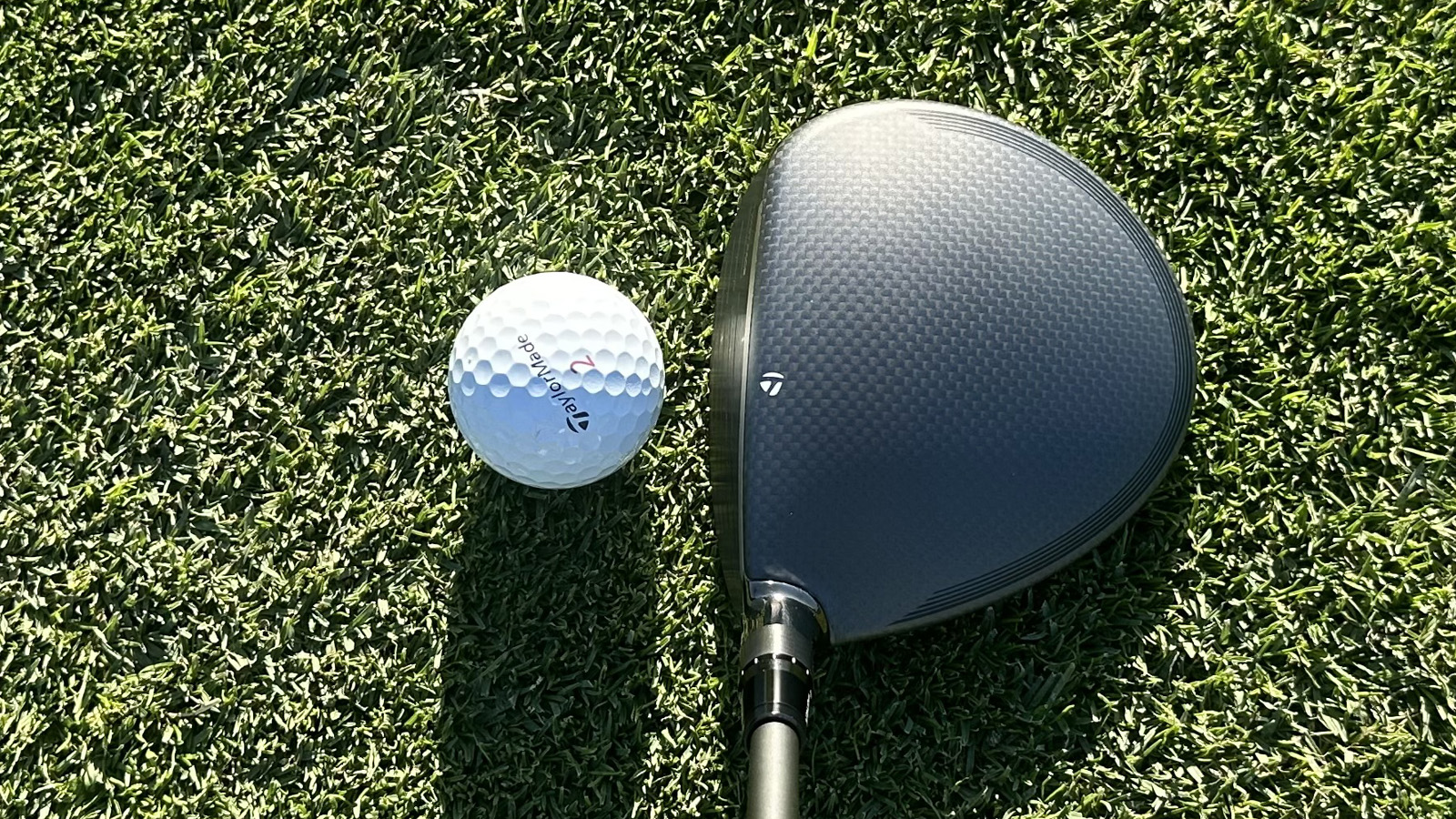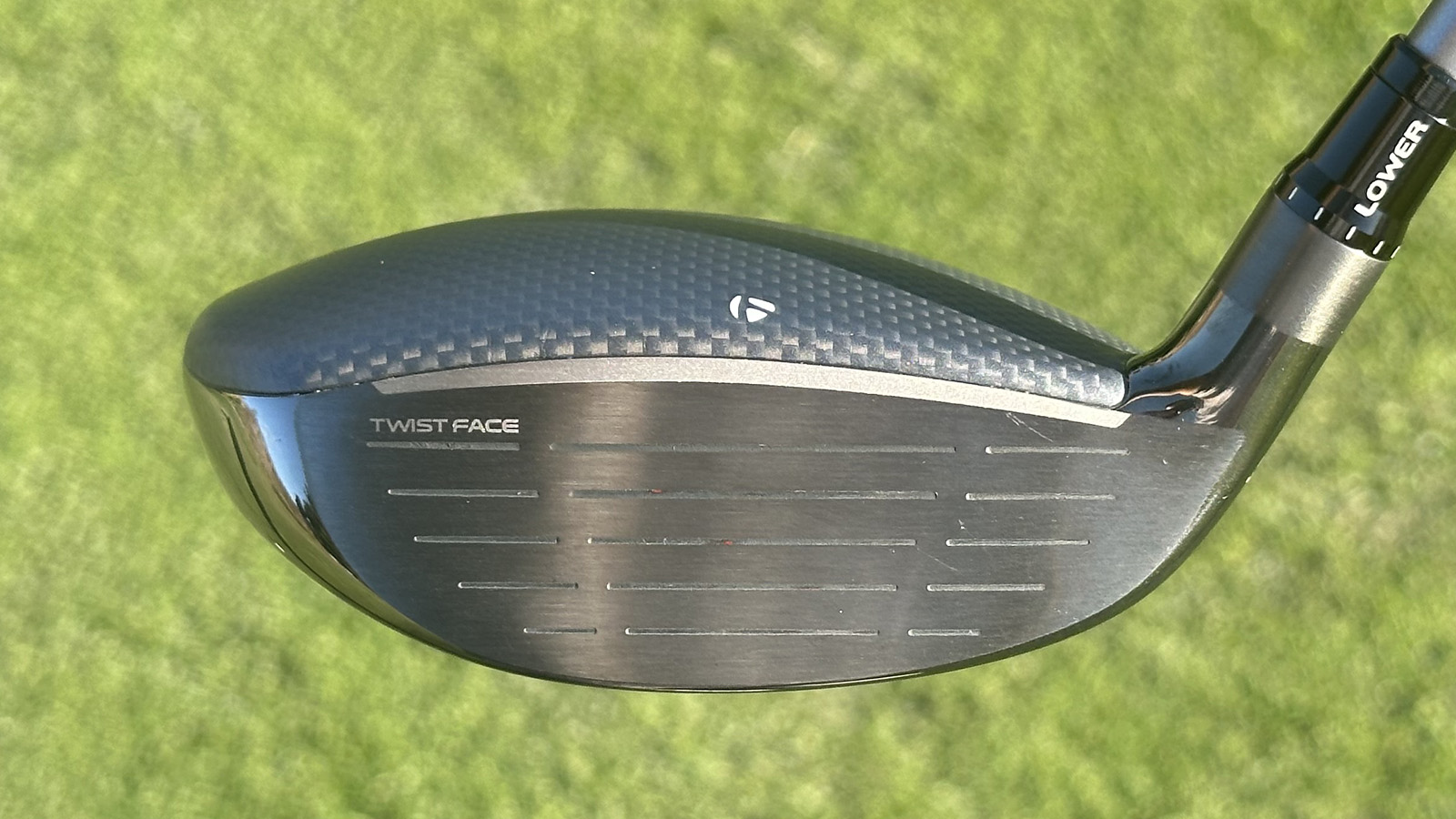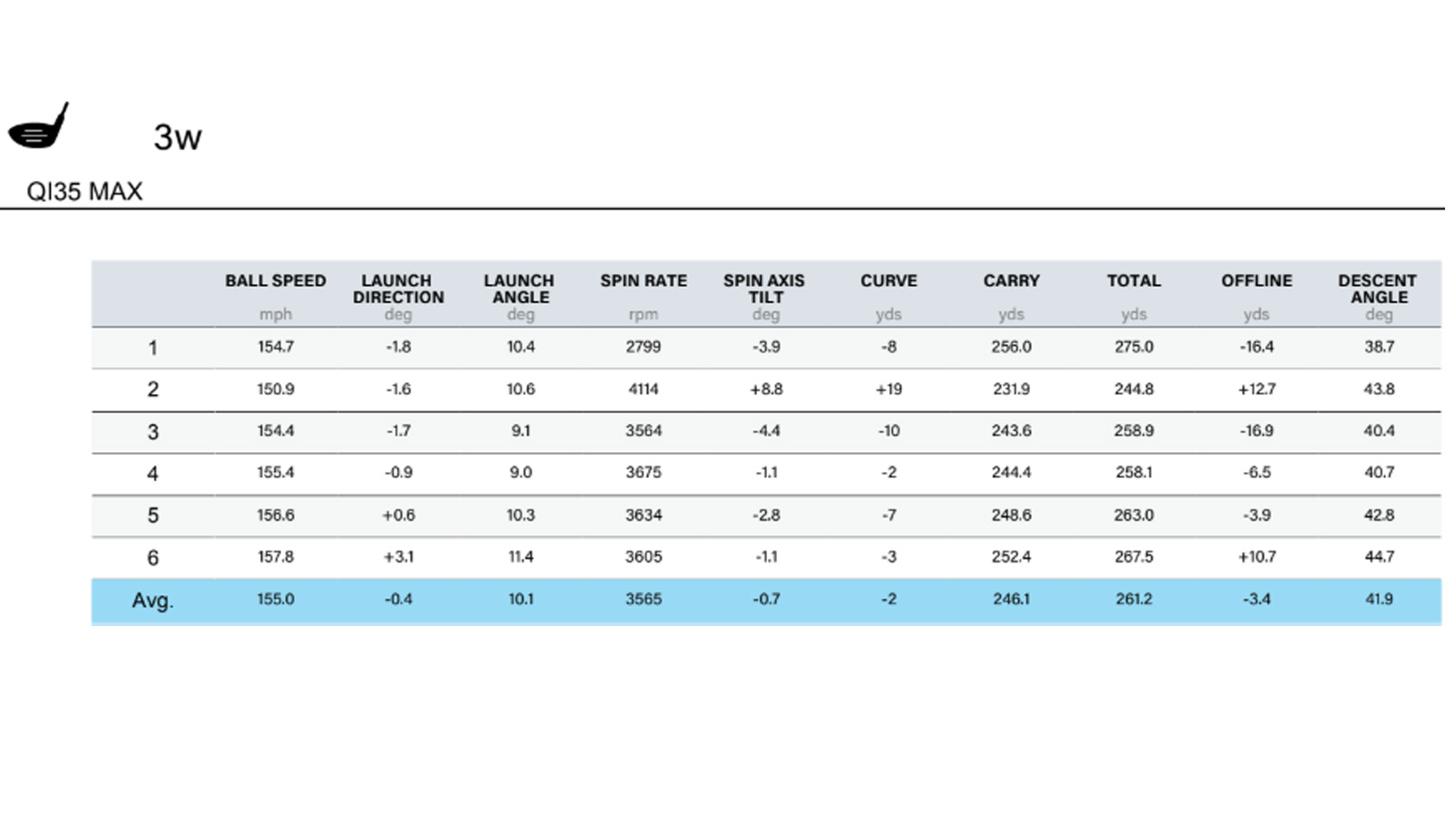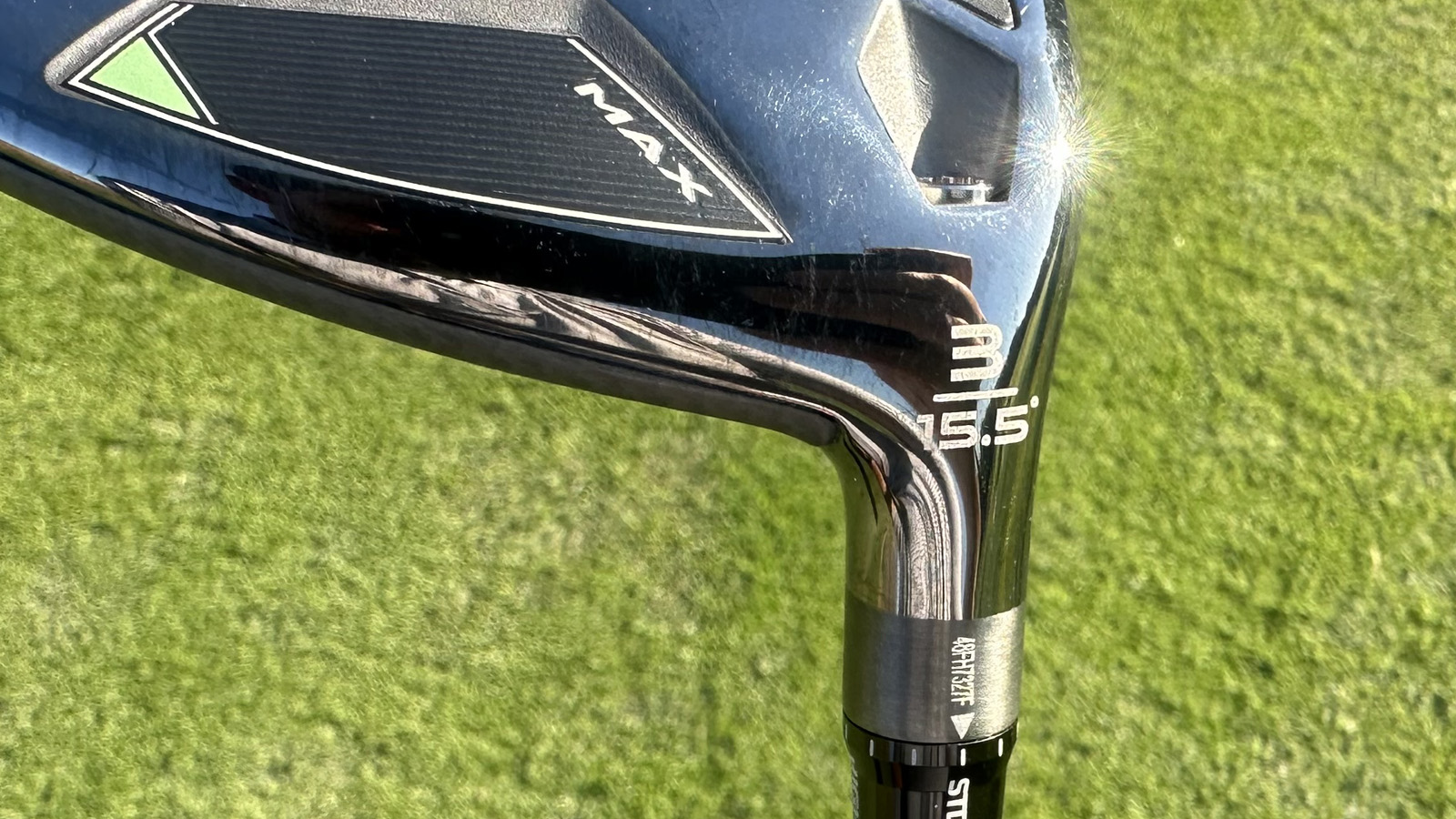
Striking fairway woods well from the ground is one of the more challenging skills in the game of golf and so manufacturers are constantly making clubs designed to make this task easier. The TaylorMade Qi35 Max is the perfect example of this. I took this model to test out on the golf course and inside on a Foresight Sports GCQuad launch monitor to help identify if the Qi35 Max fairway wood could be considered among some of the most forgiving fairway wood options on the market.
What stood out straight away to me with the Qi35 Max was the slightly larger (200cc) footprint compared to the likes of the Qi35 core model and Qi35 Tour fairway wood (170cc). This larger and slightly stretched head size will really appeal to those looking for more confidence when resting the club down at address. This larger head size allows for the CG to be lowered and pulled further back in the head to create more MOI, easier launch and ultimately more forgiveness. TaylorMade has introduced a new TSS weighting system in order to create precise swing weights through assembly and in the case of the Qi35 Max model, this weight is situated on the sole towards the rear of the club.

Aside from the slightly larger head size, the Qi35 Max boasts the same beautiful chromium carbon finish found in the rest of the TaylorMade Qi35 lineup. The continuation of style throughout a range I feel is very important and will have golfers choosing the club that would benefit their game more regularly, rather than one they may like the look of more.
It wasn’t just the aesthetics that were the same with the Qi35 Max model, the feel and acoustics where also comparable, particularly to the Qi35 core fairway wood model. The muted ‘thud’ like sound, synonymous with TaylorMade fairway woods and drivers was still present, although the Max model didn’t feel quite and heavy in the hit as was the case with the core and Qi35 Tour fairway woods.

I thought the performance on the golf course was really solid with the Qi35 Max fairway wood and it produced the ball flights and characteristics I was expecting for the most part. I saw a relatively high ball flight which offered a fairly steep landing angle - a key thing to consider if you’re someone who regularly hits fairway woods into longer par fours or fives.
The large yet fairly shallow head did an exceptional job at tearing through the first cut of rough when put to the test and enabled me to advance the ball down the hole nicely. This was also probably due to the fact I saw pretty high levels of spin on the ball which for the most part would be a good thing for golfers considering this particular model, however as a fairly high-speed player, I did find controlling the spin and trajectory of the ball somewhat difficult when the wind began to blow.

Looking at the data I gathered indoors in a controlled environment, the spin on the Qi35 Max fairway wood was on average around 400rpm more than the core Qi35 model which was to be expected. What caught my attention was the fact I actually saw a touch more launch out of the core model despite the Max model possessing half a degree more loft on the club (15.5°).
Slightly more loft on the head and more spin resulted in a slight drop off in distance when compared to the core model (246 yards carry on average) but it was the consistency in ball flight with the Max model I was most impressed with. The slight draw-bias design was evident and while I’m someone who doesn’t struggle to turn the ball over, the want for the ball to naturally move right-to-left ball flight was evident, making this model perfect for those who slice the ball.

Overall the Qi35 fairway wood pretty much does what it’s designed to do. My mishits were hardly punished and while it wasn’t the highest launching model I have tested this year, the ball flight was easily high enough to have the ball landing softly into greens. The slightly higher spin will help golfers who are low on speed or slightly erratic keep the ball in play more often and the versatility of this model was really impressive.
The TaylorMade Qi35 Max model will come to retail at £309 and will be available to purchase at retail from the 30th of January.







